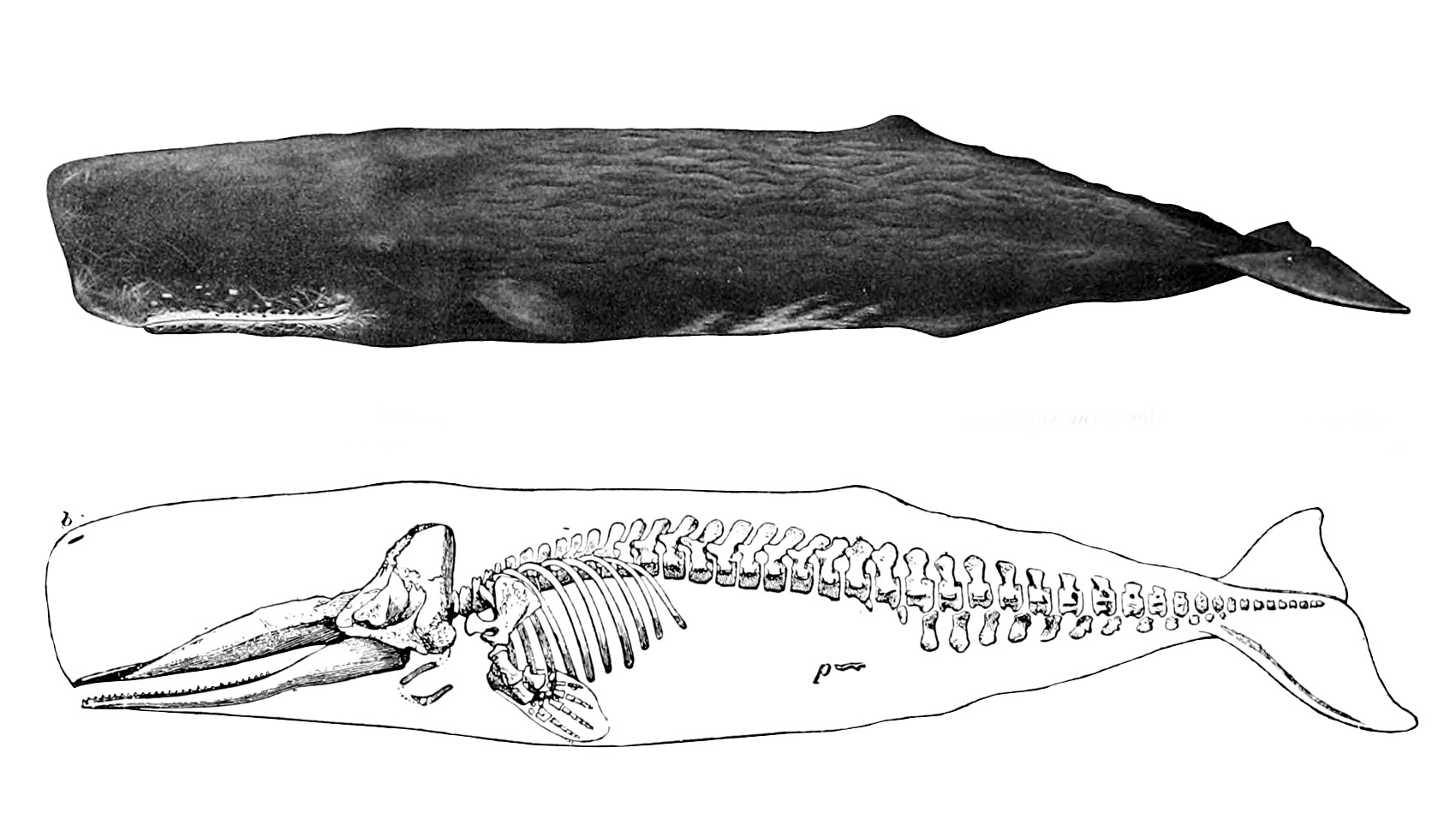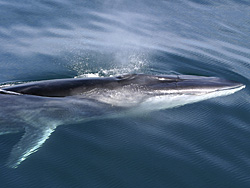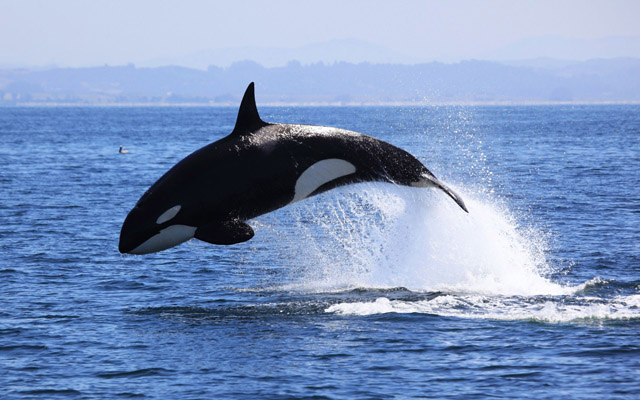For my second look at Moby Dick, I decided to focus on everyone's favorite chapter-- the cetology chapter! I remember when I first read that chapter fighting the urge to go look up images of every whale mentioned. When I found out we were looking at Moby Dick through the lens of technology, I thought I would see what the benefit was of seeing images of each different type of whale.
My original plan was to link to pictures rather than copying and pasting images into the text. However, I quickly found that so many words were boring to look at. I started copying and pasting. That was more helpful in that the pictures were right in front of me. It also held my interest better.
However, I was curious to see what the effect was to get rid of all of Melville's descriptions and let the pictures actually replace the words. I found that looking at images of each type of whale is just as informative for me personally as reading Melville's descriptions. In fact, I found that seeing pictures helps me to focus a little bit better than the pages of words that all ran together in my mind.
What is your experience as you take a look at the cetology chapter with images? Do the images change the meaning of the chapter for you?
Chapter 32: Cetology
First: According to magnitude I divide the whales into three primary BOOKS (subdivisible into CHAPTERS), and these shall comprehend them all, both small and large. I. THE FOLIO WHALE; II. the OCTAVO WHALE; III. the DUODECIMO WHALE. As the type of the FOLIO I present the SPERM WHALE; of the OCTAVO, the GRAMPUS; of the DUODECIMO, the PORPOISE. FOLIOS. Among these I here include the following chapters:--I. The SPERM WHALE; II. the RIGHT WHALE; III. the FIN-BACK WHALE; IV. the HUMP-BACKED WHALE; V. the RAZOR-BACK WHALE; VI. the SULPHUR-BOTTOM WHALE. BOOK I. (FOLIO), CHAPTER I. (SPERM WHALE).
BOOK I. (FOLIO), CHAPTER II. (RIGHT WHALE).
BOOK I. (FOLIO), CHAPTER III. (FIN-BACK).
BOOK I. (FOLIO) CHAPTER IV. (HUMP-BACK).
BOOK I. (FOLIO), CHAPTER V. (RAZOR-BACK).
BOOK I. (FOLIO), CHAPTER VI. (SULPHUR-BOTTOM).
Thus ends BOOK I. (FOLIO), and now begins BOOK II. (OCTAVO). OCTAVOES.*--These embrace the whales of middling magnitude, among which present may be numbered:--I., the GRAMPUS; II., the BLACK FISH; III., the NARWHALE; IV., the THRASHER; V., the KILLER. *Why this book of whales is not denominated the Quarto is very plain. Because, while the whales of this order, though smaller than those of the former order, nevertheless retain a proportionate likeness to them in figure, yet the bookbinder's Quarto volume in its dimensioned form does not preserve the shape of the Folio volume, but the Octavo volume does. BOOK II. (OCTAVO), CHAPTER I. (GRAMPUS).
BOOK II. (OCTAVO), CHAPTER II. (BLACK FISH).
BOOK II. (OCTAVO), CHAPTER III. (NARWHALE), that is, NOSTRIL WHALE.
BOOK II. (OCTAVO), CHAPTER IV. (KILLER).
BOOK II. (OCTAVO), CHAPTER V. (THRASHER).
No images found.
Thus ends BOOK II. (OCTAVO), and begins BOOK III. (DUODECIMO). DUODECIMOES.--These include the smaller whales. I. The Huzza Porpoise. II. The Algerine Porpoise. III. The Mealy-mouthed Porpoise. BOOK III. (DUODECIMO), CHAPTER 1. (HUZZA PORPOISE).
BOOK III. (DUODECIMO), CHAPTER II. (ALGERINE PORPOISE).--A pirate. Very savage. He is only found, I think, in the Pacific. He is somewhat larger than the Huzza Porpoise, but much of the same general make. Provoke him, and he will buckle to a shark. I have lowered for him many times, but never yet saw him captured. BOOK III. (DUODECIMO), CHAPTER III. (MEALY-MOUTHED PORPOISE).
Beyond the DUODECIMO, this system does not proceed, inasmuch as the Porpoise is the smallest of the whales. Above, you have all the Leviathans of note. But there are a rabble of uncertain, fugitive, half-fabulous whales, which, as an American whaleman, I know by reputation, but not personally. I shall enumerate them by their fore-castle appellations; for possibly such a list may be valuable to future investigators, who may complete what I have here but begun. If any of the following whales, shall hereafter be caught and marked, then he can readily be incorporated into this System, according to his Folio, Octavo, or Duodecimo magnitude:--The Bottle-Nose Whale; the Junk Whale; the Pudding-Headed Whale; the Cape Whale; the Leading Whale; the Cannon Whale; the Scragg Whale; the Coppered Whale; the Elephant Whale; the Iceberg Whale; the Quog Whale; the Blue Whale; etc. From Icelandic, Dutch, and old English authorities, there might be quoted other lists of uncertain whales, blessed with all manner of uncouth names. But I omit them as altogether obsolete; and can hardly help suspecting them for mere sounds, full of Leviathanism, but signifying nothing. Finally: It was stated at the outset, that this system would not be here, and at once, perfected. You cannot but plainly see that I have kept my word. But I now leave my cetological System standing thus unfinished, even as the great Cathedral of Cologne was left, with the crane still standing upon the top of the uncompleted tower. For small erections may be finished by their first architects; grand ones, true ones, ever leave the copestone to posterity. God keep me from ever completing anything. This whole book is but a draught--nay, but the draught of a draught. Oh, Time, Strength, Cash, and Patience!
(The text was taken from the Project Gutenburg electronic text)









No comments:
Post a Comment